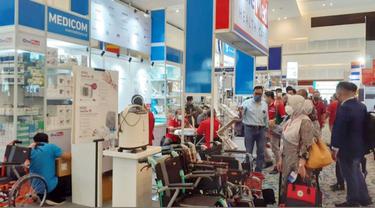Latest Medical Technology Innovations in Indonesia 2023 – Indonesia, an archipelagic country rich in culture and natural beauty, has shown a strong commitment in advancing the health sector and medical technology. In 2023, Indonesia is experiencing a huge leap forward in medical technology innovation, opening new doors for better and more advanced healthcare for its entire population. These innovations not only strengthen health systems, but also improve the quality of life for society as a whole.
One of the newest innovations in the spotlight
In recent years, AI technology has shown great potential in the healthcare field. In Indonesia, the use of AI in diagnosis has changed the paradigm of medical care. The advanced AI system can quickly and accurately analyze patient clinical data, providing a more precise initial diagnosis and reducing the risk of human error. This has helped doctors and medical personnel provide more appropriate and effective treatment to patients.
In addition the development of wearable technology
Has also brought significant innovation in the health sector in Indonesia. Wearable devices such as smart bracelets, smartwatches and other small sensors have made real-time health monitoring possible. The data collected by these wearables can provide valuable information about a user’s health, such as heart rate, physical activity level, and sleep patterns. With this information, individuals can monitor their own health conditions and take the necessary precautions, enabling medical personnel to provide more personalized and targeted care.
In Indonesia
Telemedicine has become one of the biggest medical technology innovations. Telemedicine allows patients to obtain medical consultations remotely, without having to go to a physical health facility. This is especially important given that Indonesia is a sprawling archipelago with limited access to health services in some remote areas. Telemedicine has enabled easier and faster access to trained medical personnel, reducing travel costs and the time required to obtain medical care. Through video or telephone consultations, patients can discuss their concerns with their doctor, get an initial diagnosis, and even receive a prescription. Telemedicine has helped close the health access gap in Indonesia and provide more inclusive care for everyone.
In addition, robotics technology has made a major contribution in the health sector in Indonesia. Surgical robots, controlled by trained surgeons, have performed complex operations with a high degree of precision. The main advantages of this technology are the ability to perform minimally invasive surgery, reduced risk of infection and faster recovery for patients. Apart from that, robotics is also used in medical rehabilitation, assisting patients in their physical recovery after injuries or surgeries. With the help of robots, patients can carry out exercises and therapies independently, with supervision and guidance from trained medical personnel.
Not only in medical care, medical technology innovation has also played an important role in managing health data. The use of cloud technology and big data analytics has enabled efficient storage and analysis of health data. Integrated electronic health data allows easy access for different medical personnel, reduces data loss and improves coordination of patient care. In emergency situations such as the COVID-19 pandemic, these technologies play a key role in tracking and controlling the spread of the virus, as well as facilitating mass vaccination.
The latest medical technology innovations in Indonesia in 2023 reflect the commitment of the government and medical personnel to provide better health care to the community. In the next few years, it is hoped that further medical technology developments will continue, such as the use of augmented reality (AR) and virtual reality (VR) in medical education, the development of gene therapies for genetic diseases, and the use of nanotechnology in diagnosis and treatment. All of these innovations will contribute to improving the quality of life and life expectancy of the Indonesian people, as well as making Indonesia a center for medical technology innovation in Southeast Asia.
In order to face future health challenges, collaboration between government, private sector, and academia is very important. With the right investments in research and development, and the formation of supportive policies, Indonesia can continue to be at the forefront of medical technology innovation and create a healthier future for all its people.
